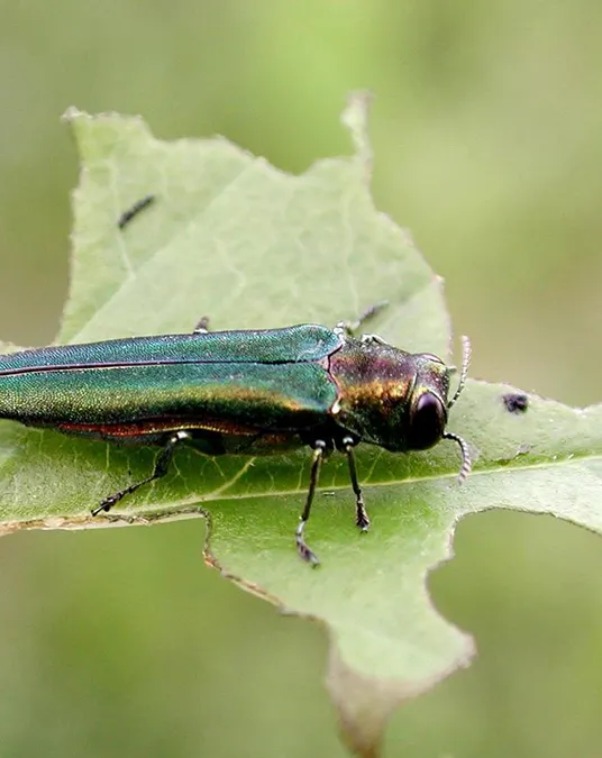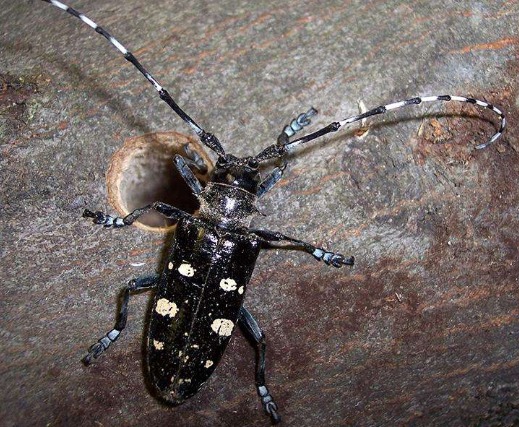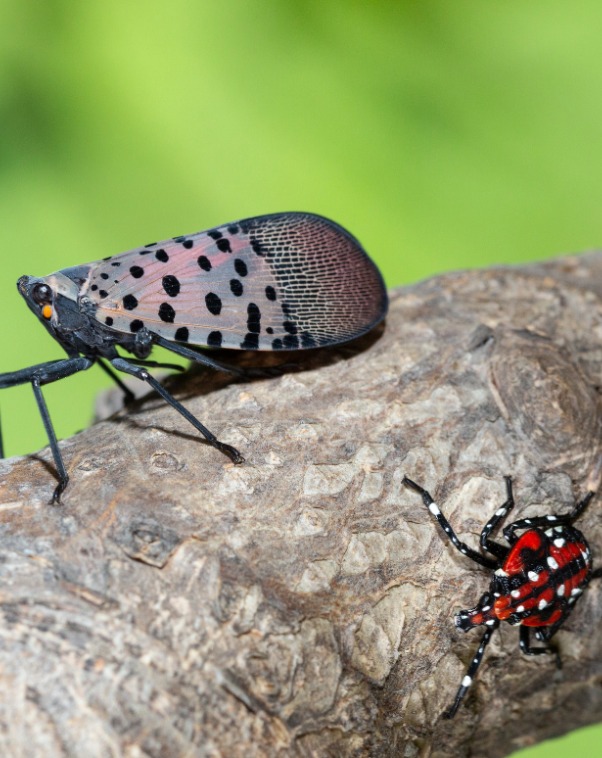Invasive Insects
Invasive Insects to Look Out For
Emerald Ash Borer
Adult beetles are metallic green and about ½ inch long.
Why it's a problem
The larvae feed on the inner bark of ash trees, disrupting the tree's ability to transport water and nutrients. Individual trees tend to die within 2-3 years after becoming infested, while stands of trees often die within 8 years of the insect entering the stand. The loss of ash trees from the forest leads to a cascading effect on other organisms that rely on ash trees for food or habitat. There is a concern that the population of ash trees in Connecticut will be so reduced that it might not be able to recover.
How to spot an infestation
Signs of an infestation include bark splitting that reveals the serpentine feeding galleries created by larvae, D-shaped holes adults form in the bark upon emergence, and increased woodpecker activity and damage since they like EAB larvae.
What you can do
Keep a close on ash trees in your neighborhood or that you see on a regular basis. Act quickly to report any ash trees that are declining. Also, be especially careful when moving any firewood or young trees because this is how the insects can spread.


Asian Longhorned Beetle
Adult insects have a shiny, black body with white spots, about the size of an almond, and black and white antennae that are longer than the insect’s body.
Why it's a problem
This insect attacks and kills maple and other hardwood trees. The insect grows inside trees and feeds on the living tissues that carry nutrients. Trees cannot heal from the damage ALB causes.
How to spot an infestation
The best indication of the presence of an ALB infestation is the insect itself. Other indicators are round exit holes about the size of a dime, frothing sap, and a sawdust-like material called frass found on the ground around the tree or on tree branches.
What you can do
If you think you found a beetle or tree damage, report it to the Connecticut Agricultural Experiment Station. Try to photograph the ALB or tree damage, and do not attempt to move the insect, any wood, or other potentially infested material from the site. If you need to capture the beetle, do so in a durable container and freeze it.
Spotted Lanternfly
In the first three nymphal stages the insect is all black with white spots, and in the fourth and final nymphal stage it is red with white dots and black stripes. Adults have black bodies with brightly colored wings. Only the adults can fly short distances, and otherwise the insect jumps.
Why it’s a problem?
These insects feed on the sap of over 70 different plant species which can weaken and damage the plant. Their feeding also creates a sticky, sugary residue called 'honeydew' which attracts other insects and promotes the growth of a black mold called 'sooty mold' that further damages the plant by blocking photosynthesis. Many of the fruit trees grown in Connecticut are also considered to be vulnerable and even if the insect does not kill the trees, it could destroy the value of the fruit.
How to spot an infestation?
The main indicator would be seeing large numbers of SLFs grouped together on hosts to feed. Oozing sap, sooty mold on the leaves of the plant, honeydew buildup, and grey clay-like egg masses are also indicators of an infestation.
What you can do?
If you think you have observed spotted lanternflies, do not attempt to move any wood or other potentially infested material from the site. Report potential sightings to the SLF Report Form on the ct.gov website. Also, kill any spotted lanternflies you find immediately.

